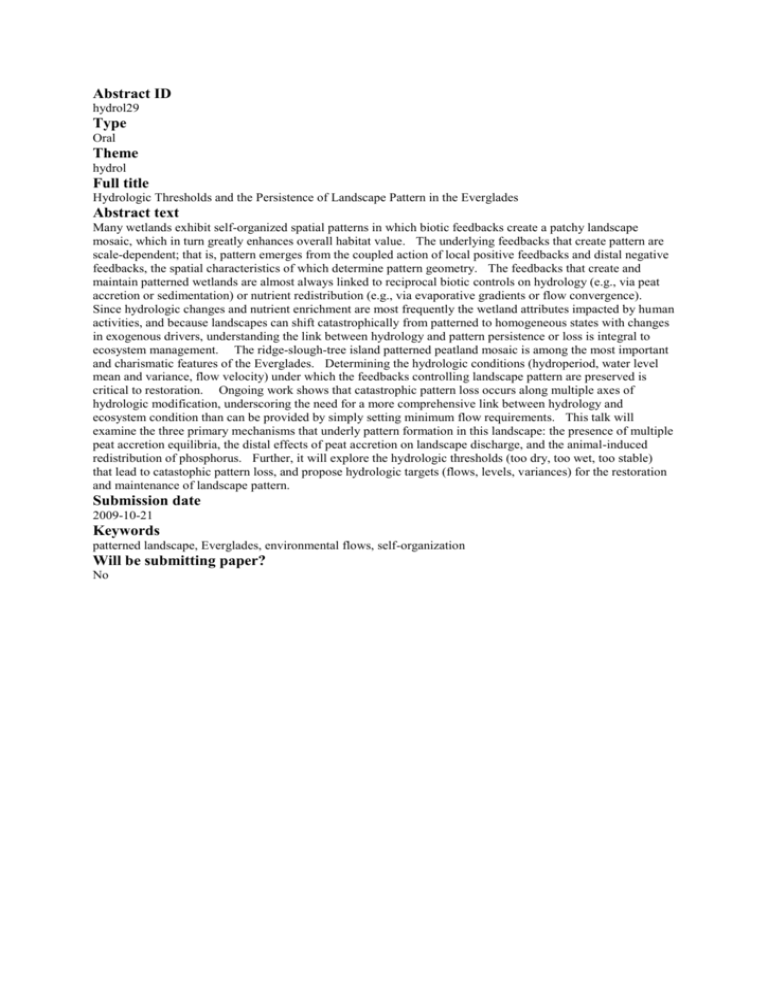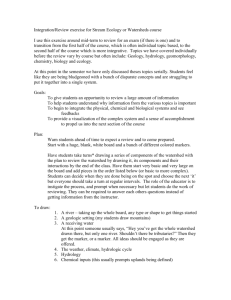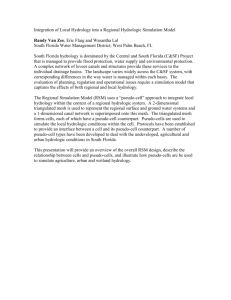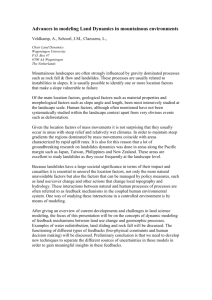Abstract ID hydrol29 Type Oral Theme hydrol Full title Hydrologic
advertisement

Abstract ID hydrol29 Type Oral Theme hydrol Full title Hydrologic Thresholds and the Persistence of Landscape Pattern in the Everglades Abstract text Many wetlands exhibit self-organized spatial patterns in which biotic feedbacks create a patchy landscape mosaic, which in turn greatly enhances overall habitat value. The underlying feedbacks that create pattern are scale-dependent; that is, pattern emerges from the coupled action of local positive feedbacks and distal negative feedbacks, the spatial characteristics of which determine pattern geometry. The feedbacks that create and maintain patterned wetlands are almost always linked to reciprocal biotic controls on hydrology (e.g., via peat accretion or sedimentation) or nutrient redistribution (e.g., via evaporative gradients or flow convergence). Since hydrologic changes and nutrient enrichment are most frequently the wetland attributes impacted by human activities, and because landscapes can shift catastrophically from patterned to homogeneous states with changes in exogenous drivers, understanding the link between hydrology and pattern persistence or loss is integral to ecosystem management. The ridge-slough-tree island patterned peatland mosaic is among the most important and charismatic features of the Everglades. Determining the hydrologic conditions (hydroperiod, water level mean and variance, flow velocity) under which the feedbacks controlling landscape pattern are preserved is critical to restoration. Ongoing work shows that catastrophic pattern loss occurs along multiple axes of hydrologic modification, underscoring the need for a more comprehensive link between hydrology and ecosystem condition than can be provided by simply setting minimum flow requirements. This talk will examine the three primary mechanisms that underly pattern formation in this landscape: the presence of multiple peat accretion equilibria, the distal effects of peat accretion on landscape discharge, and the animal-induced redistribution of phosphorus. Further, it will explore the hydrologic thresholds (too dry, too wet, too stable) that lead to catastophic pattern loss, and propose hydrologic targets (flows, levels, variances) for the restoration and maintenance of landscape pattern. Submission date 2009-10-21 Keywords patterned landscape, Everglades, environmental flows, self-organization Will be submitting paper? No








